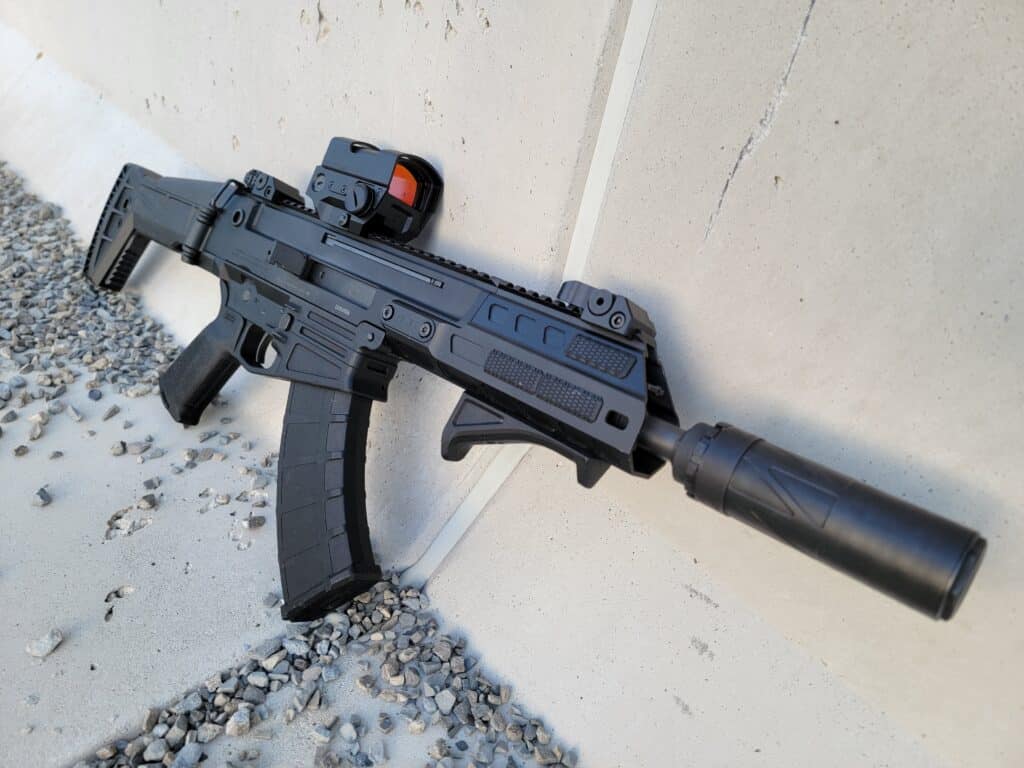Lead & Steelopedia Introduction to NFA
Welcome, firearms enthusiasts, to our steelopedia post dedicated to shedding light on the often misunderstood world of National Firearms Act (NFA) regulations. If you’ve ever been curious about owning Class 3 firearm accessories or wondered about the intricacies of NFA compliance, you’ve come to the right place. In this comprehensive guide, we’ll demystify NFA regulations and help you navigate the process of acquiring and enjoying these specialized accessories legally. Let’s dive in!

- Understanding the NFA: The National Firearms Act, enacted in 1934, regulates the transfer and possession of certain firearms and accessories. The goal of the NFA is to control the sale and use of firearms that are deemed particularly dangerous or have military applications. Class 3 firearms, also known as Title II firearms, fall under the purview of the NFA.
- Types of Class 3 Firearm Accessories: Class 3 firearm accessories include items such as suppressors (silencers), short-barreled rifles (SBRs), short-barreled shotguns (SBSs), fully automatic firearms, and destructive devices. Each of these categories has its own set of regulations and requirements for ownership and transfer.
- Ownership and Transfer Process: To legally own a Class 3 firearm accessory, you must navigate a detailed and regulated process. This typically involves obtaining approval from the Bureau of Alcohol, Tobacco, Firearms, and Explosives (ATF), submitting appropriate forms, paying fees, and undergoing a background check. We’ll explore the key steps involved in this process and offer guidance on how to navigate them smoothly.
- Compliance and Record-Keeping: Once you’ve successfully acquired a Class 3 firearm accessory, it’s crucial to understand your responsibilities as a lawful owner. Compliance with NFA regulations entails proper storage, usage, transportation, and transfer of these items. Additionally, maintaining meticulous records of ownership and transfers is vital to ensure compliance with the law.
- Benefits and Practical Applications: Class 3 firearm accessories offer unique benefits and practical applications for enthusiasts. Suppression devices can reduce noise levels and mitigate recoil, enhancing shooting comfort and accuracy. Short-barreled firearms provide increased maneuverability and versatility in close quarters. Understanding these benefits helps you make informed decisions about which accessories align with your shooting preferences and goals.
- Training and Safe Handling: Owning Class 3 firearm accessories comes with added responsibility. Proper training and safe handling practices are essential to ensure both personal safety and compliance with the law. We’ll explore training resources and provide tips for responsible firearm ownership, highlighting the importance of ongoing education and skill development.
- State and Local Laws: While the NFA provides federal regulations, it’s crucial to remember that state and local laws may impose additional restrictions on Class 3 firearm accessories. Familiarize yourself with the specific laws in your jurisdiction to avoid any inadvertent violations and ensure full compliance with all applicable regulations.
Acquiring and enjoying Class 3 firearm accessories can be a rewarding experience for firearms enthusiasts. By understanding the intricacies of NFA regulations, adhering to compliance requirements, and prioritizing safe and responsible ownership, you can embark on this journey with confidence and peace of mind. Remember to consult with legal professionals or trusted firearms dealers for guidance tailored to your specific circumstances. Lead & Steel is not responsible for any legal advice or misinformation, it is important that you familiarize yourself with the most up to date legalities and specifics for your state.




